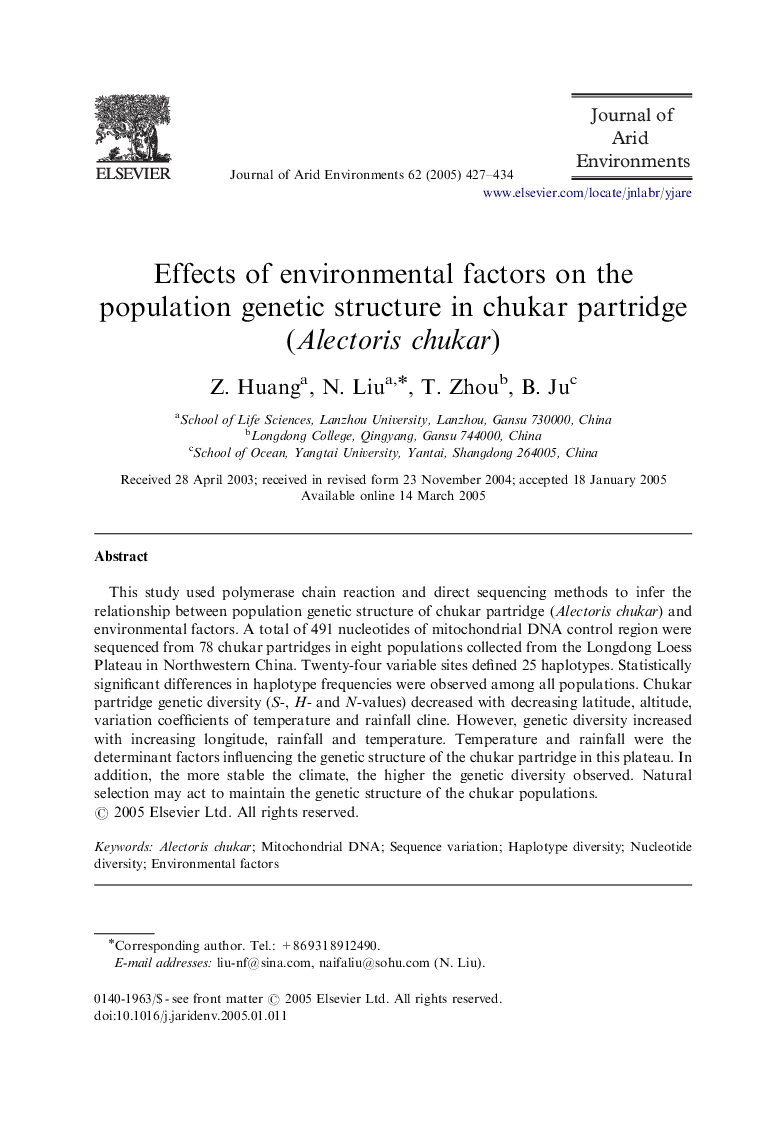| Article ID | Journal | Published Year | Pages | File Type |
|---|---|---|---|---|
| 9447819 | Journal of Arid Environments | 2005 | 8 Pages |
Abstract
This study used polymerase chain reaction and direct sequencing methods to infer the relationship between population genetic structure of chukar partridge (Alectoris chukar) and environmental factors. A total of 491 nucleotides of mitochondrial DNA control region were sequenced from 78 chukar partridges in eight populations collected from the Longdong Loess Plateau in Northwestern China. Twenty-four variable sites defined 25 haplotypes. Statistically significant differences in haplotype frequencies were observed among all populations. Chukar partridge genetic diversity (S-, H- and N-values) decreased with decreasing latitude, altitude, variation coefficients of temperature and rainfall cline. However, genetic diversity increased with increasing longitude, rainfall and temperature. Temperature and rainfall were the determinant factors influencing the genetic structure of the chukar partridge in this plateau. In addition, the more stable the climate, the higher the genetic diversity observed. Natural selection may act to maintain the genetic structure of the chukar populations.
Keywords
Related Topics
Physical Sciences and Engineering
Earth and Planetary Sciences
Earth-Surface Processes
Authors
Z. Huang, N. Liu, T. Zhou, B. Ju,
